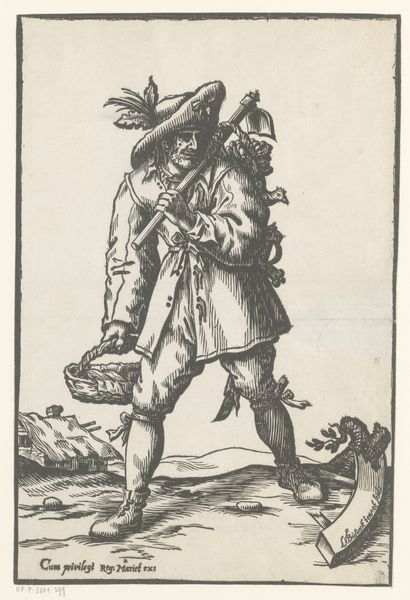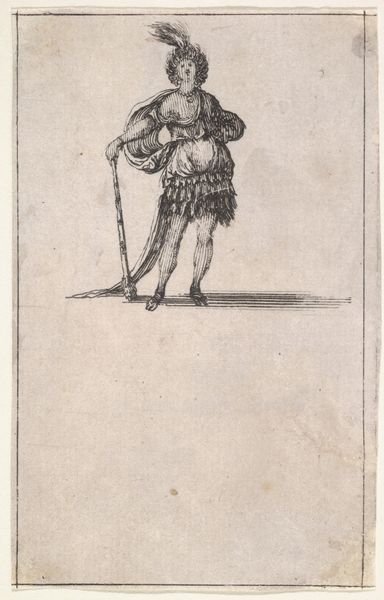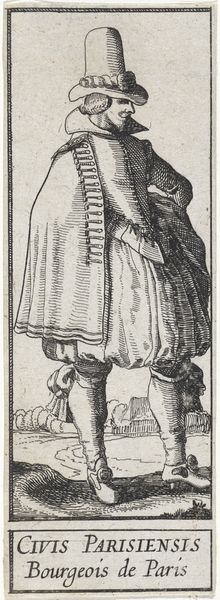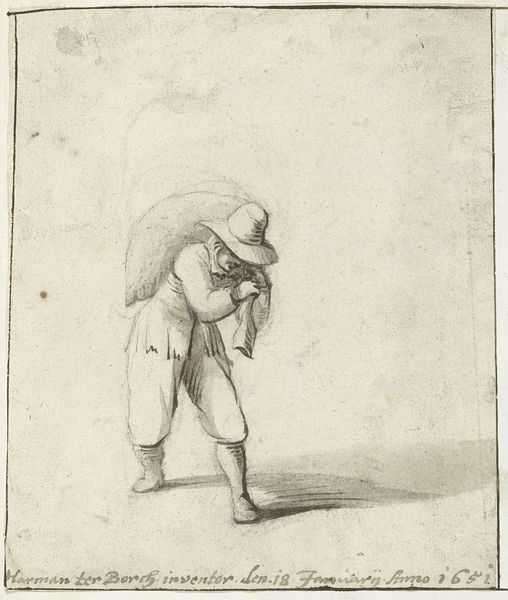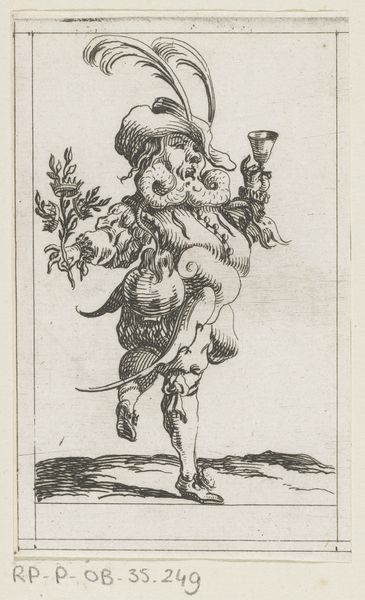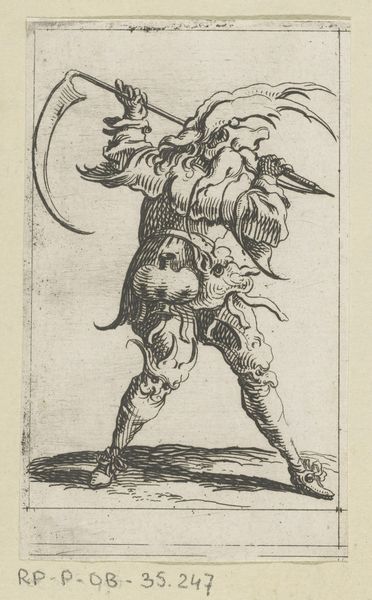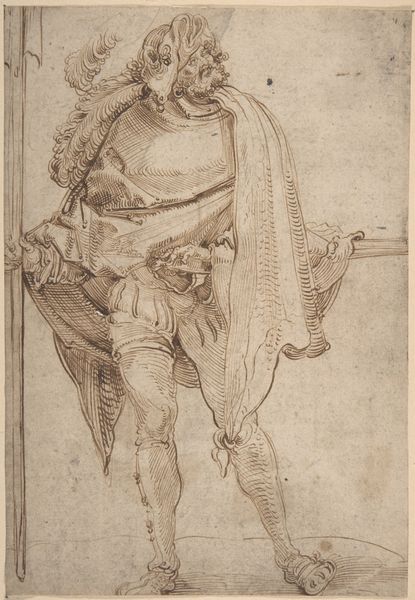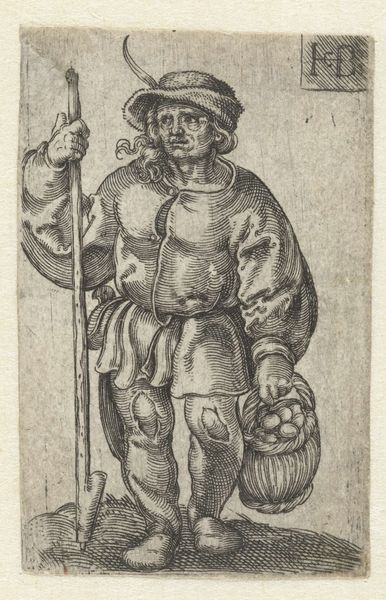
drawing, pen
#
portrait
#
drawing
#
figuration
#
pen
#
genre-painting
Dimensions: height 125 mm, width 64 mm
Copyright: Rijks Museum: Open Domain
Editor: Here we have "Standing Man with Backpack and a Sword" by Sebald Beham, created sometime between 1510 and 1550. It's a pen drawing held at the Rijksmuseum. The figure looks like he's on a journey, maybe a mercenary? What kind of world would produce this figure, and how should we view it today? Curator: This drawing offers a fascinating glimpse into the social anxieties and changing power structures of the early 16th century. Beham, and other artists like him, were deeply concerned with representing social types. What details strike you as particularly revealing? Editor: I notice his sword is more decorative than practical. It contrasts sharply with his very worn, functional boots and backpack. It's an odd combination of warrior and… something else. Curator: Precisely. The sword, in this context, might be less about actual combat and more about signaling a certain status, aspirations, or even anxieties about declining social mobility. Does the sword imply something about social tension, or perhaps something about this man's sense of self? Editor: That makes sense. So he's using the imagery of a soldier, but the rest of his attire points to a much more humble reality? Maybe he's trying to climb the social ladder through appearance? Curator: Exactly. These "genre paintings", as they're now often called, played an important role in visualizing, and thus shaping, contemporary social perceptions. The very act of portraying figures like this highlights an emergent interest in the everyday lives of ordinary people – an interest that also has implications for power relations within the artwork itself. We are prompted to examine someone on the fringe, and thus we are confronted with the structure that defines it. Editor: So, Beham isn't just showing us a man with a sword and a backpack; he’s offering a commentary on the societal forces at play? I never would have considered how charged an image like this could be! Curator: It's a testament to the power of art as a cultural mirror, reflecting and shaping how we understand the world. It speaks volumes, doesn’t it?
Comments
No comments
Be the first to comment and join the conversation on the ultimate creative platform.
